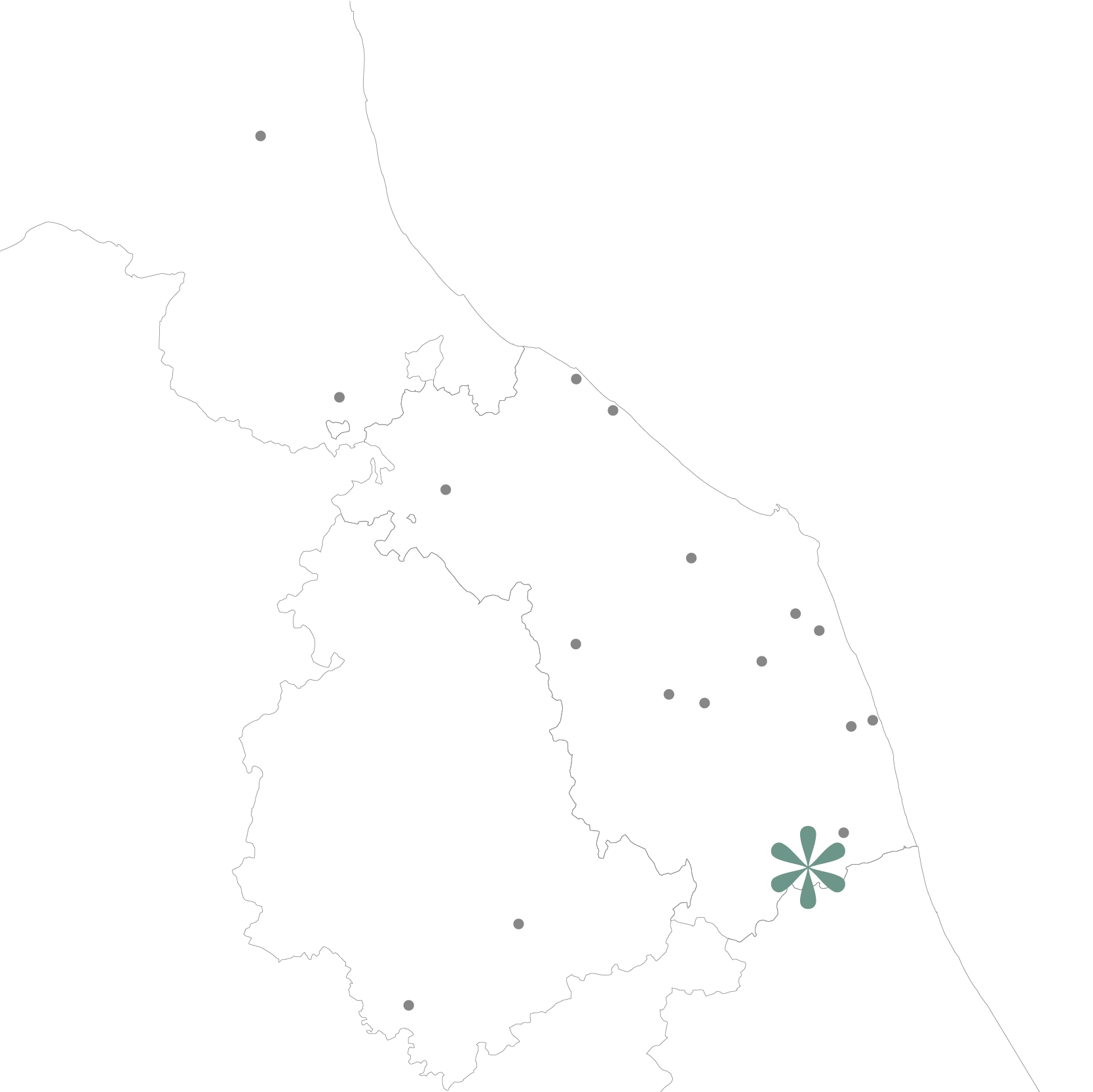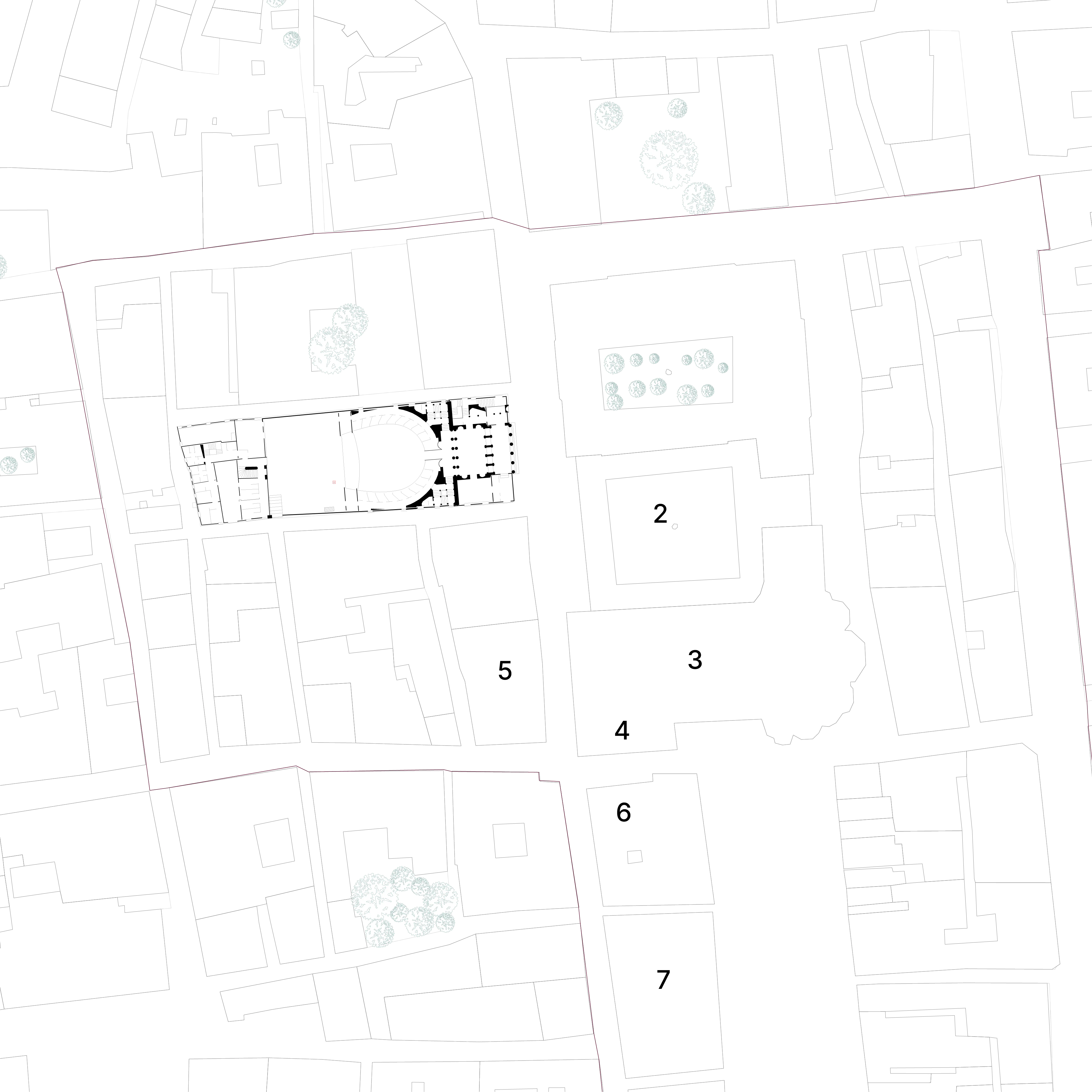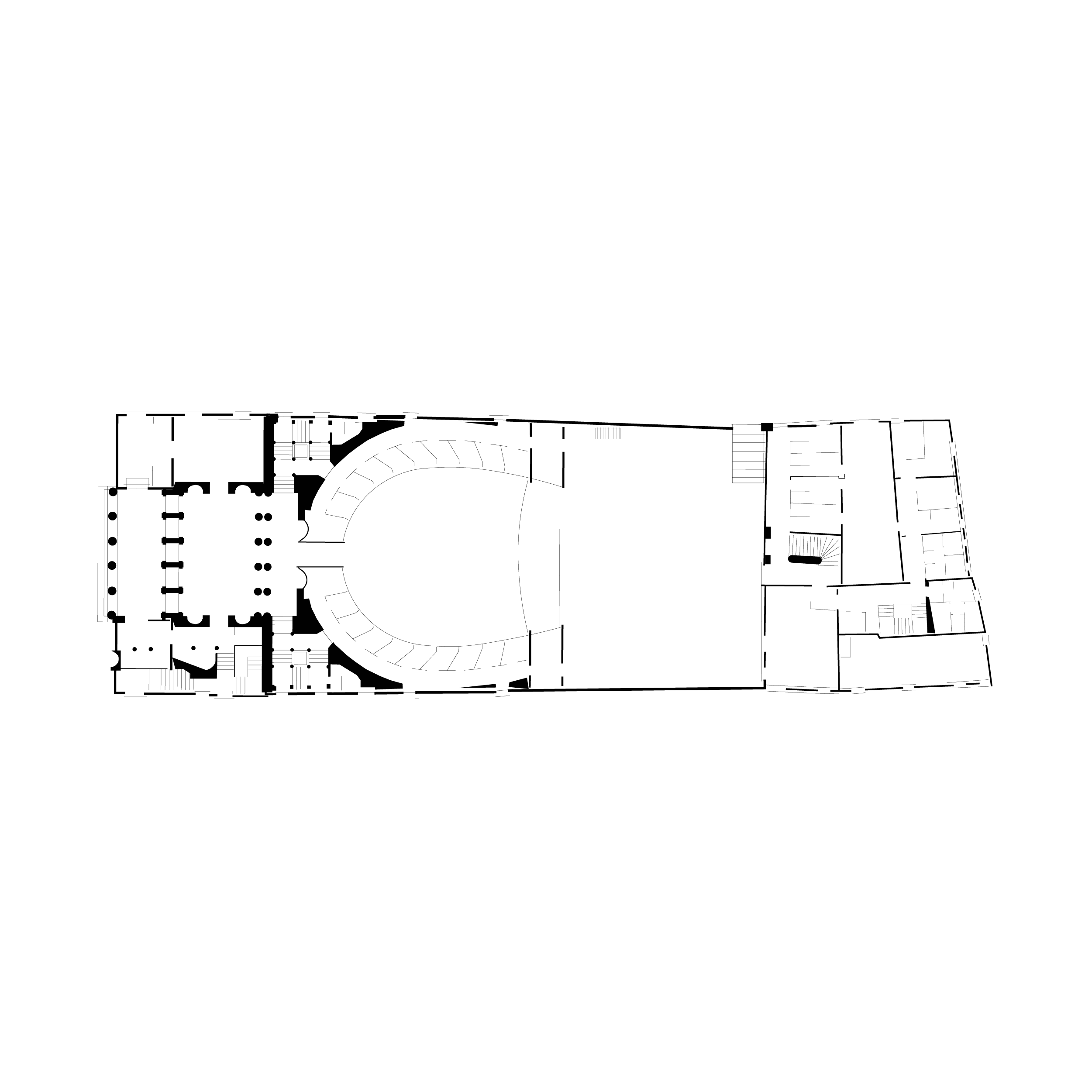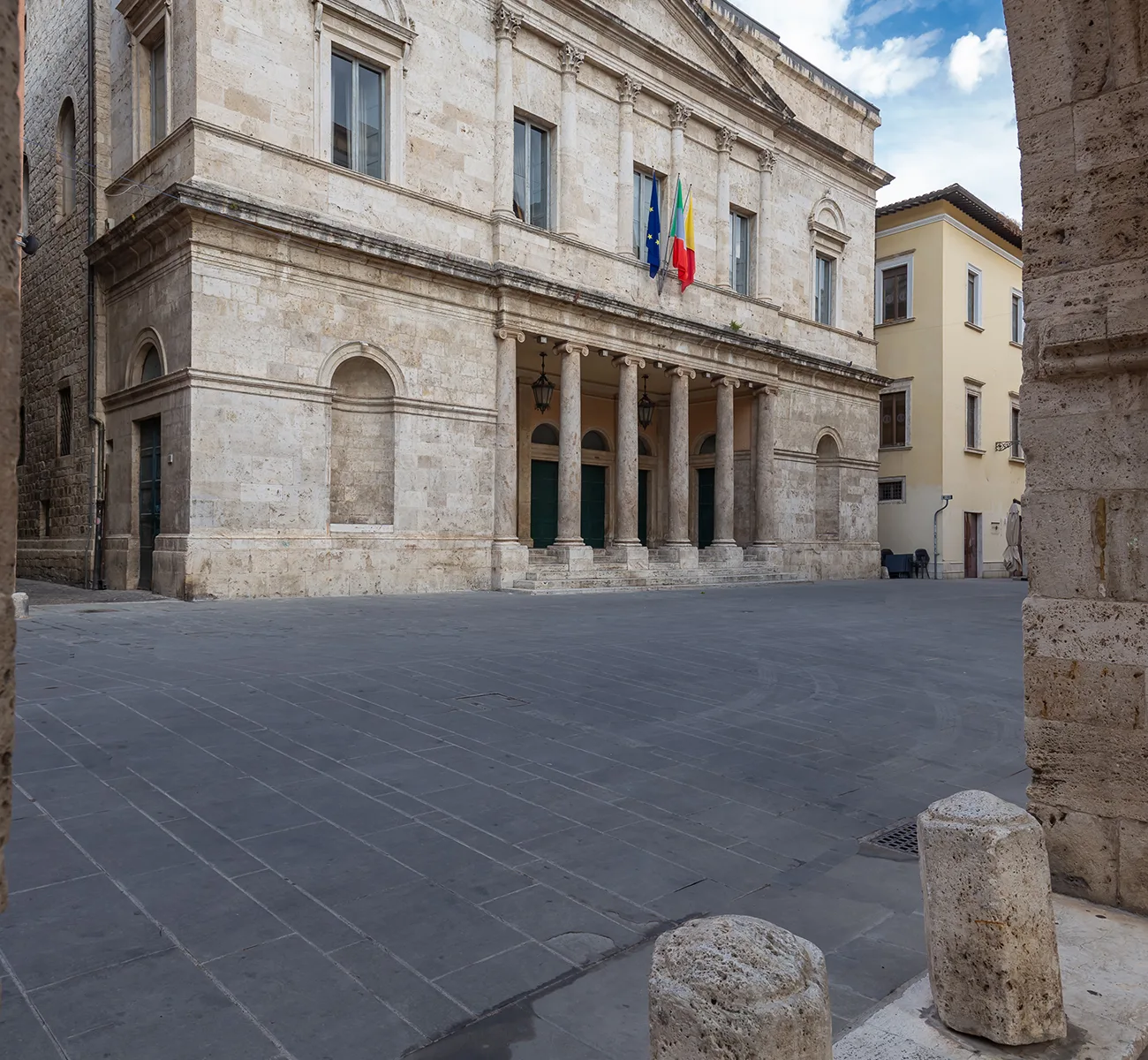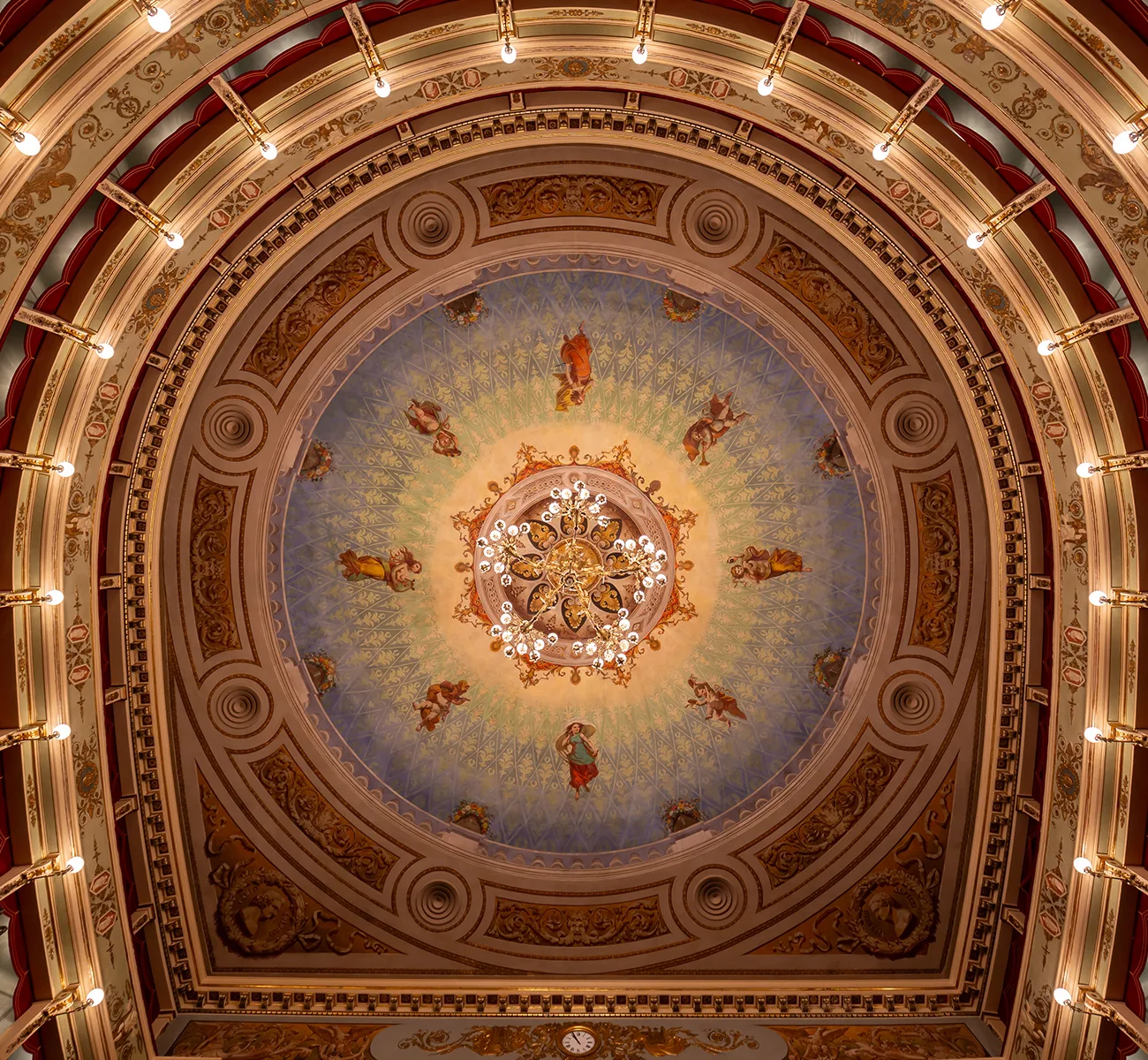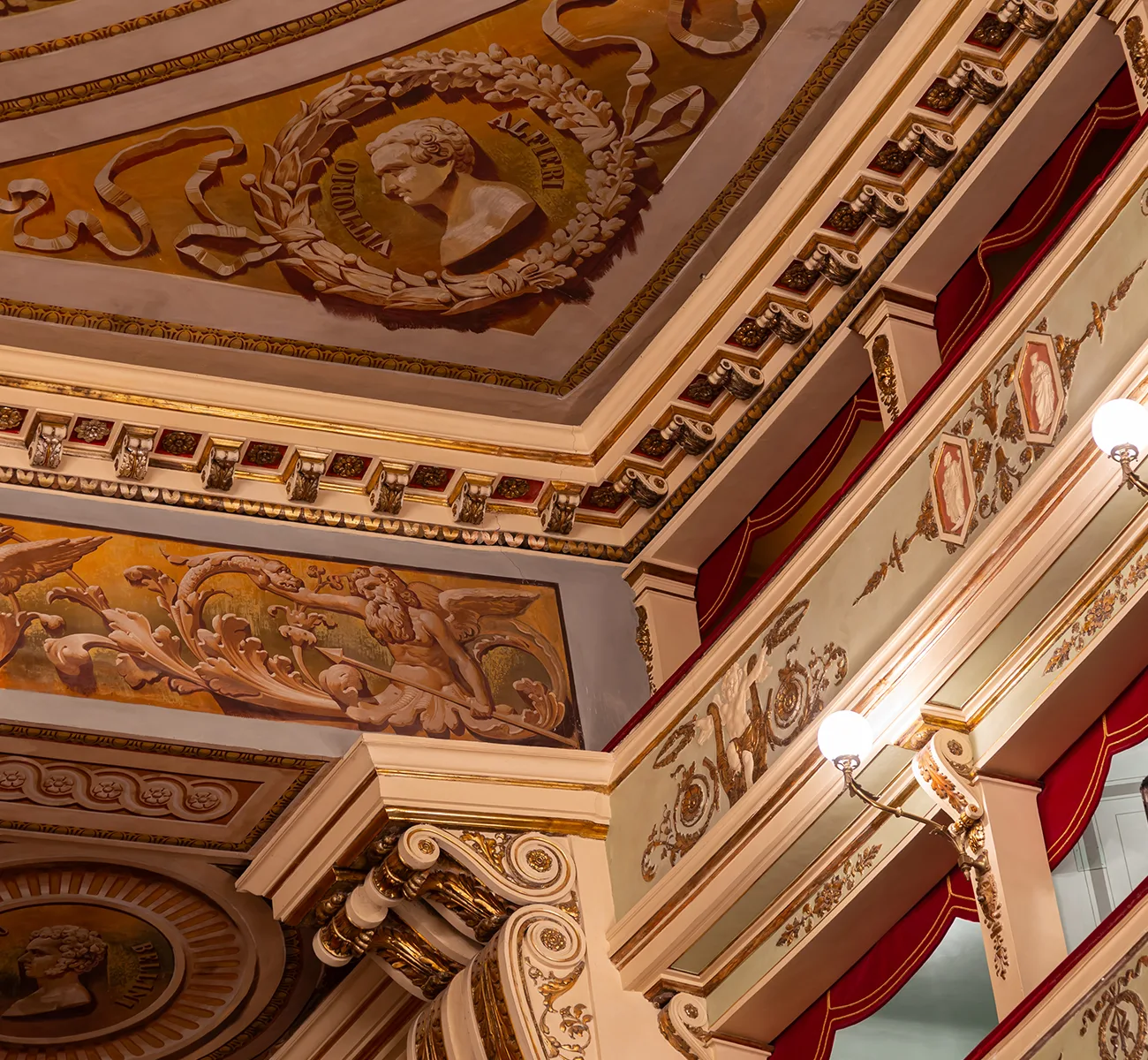The nominated property includes the blocks near the Teatro Ventidio Basso and those lining Piazza del Popolo in Ascoli Piceno. The Teatro Ventidio Basso is situated opposite Chiostro Maggiore, the cloister of the church of San Francesco in Via del Trivio. The theatre is a standalone building embedded in the medieval fabric of the city. Further along Via del Trivio are Palazzo Rosati and the Loggia dei Mercanti (the Merchants’ Lodge) south of the church of San Francesco. This is followed by Piazza del Popolo, the heart of the old town of Ascoli Piceno and an open-air monument in its own right. To cover the irregular medieval shop fronts that once lined the square, a travertine colonnade with brick vaults was installed, giving it a more harmonious and unified look. On the west side is Palazzo dei Capitani del Popolo, built between the late 13th and 14th centuries by joining three medieval buildings. This palazzo is one of the city’s most historical and architectural landmarks.
The house curtain of the Teatro Ventidio Basso was painted by Cesare Recanatini in 1872 with a perspective rendering of the monumental Piazza del Popolo. The theatre also retains two backdrops from the original stage set. The theatre’s stage equipment includes both manual and motorised rigging systems, ensuring the efficient management of stage performances.
The ridotto on the upper floor behind the third tier of boxes has a row of columns supporting a balcony used by musicians. The Art Nouveau tempera decorations on the ceiling feature floral motifs, a central rose and the four seasons in the corners.
Every year the Teatro Ventidio Basso hosts a theatre season with performances for families organised in partnership with AMAT, and an opera season organised with Fondazione Rete Lirica delle Marche. In addition, a variety of performances organised by associations, companies, specialist organisations, as well as conferences, guided tours, matinee events for schools, and events in the foyer take place there. The Teatro Ventidio Basso works closely with the Istituto Musicale G. Spontini, which runs a music school and a dance school and is wholly owned by the Municipality of Ascoli Piceno. It also works with numerous local cultural associations that organise annual dance, music and theatre performances and events. These collaborations enrich the quality and diversity of the cultural offering with an outstanding programme that promotes local excellence and talent. The Teatro Ventidio Basso is open to visitors during normal opening hours. Guided tours have been taking place regularly since April 2023 and are steadily increasing in number.
